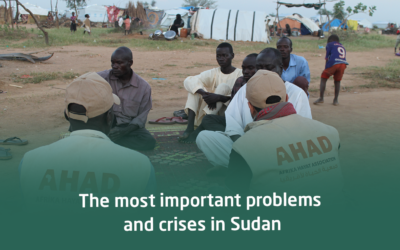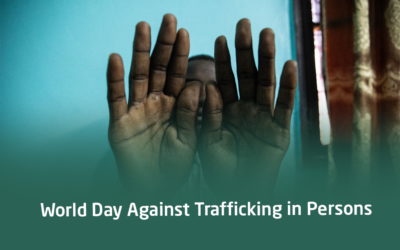The humanitarian crisis in Kenya
The causes of the humanitarian crisis in Kenya: a comprehensive analysis
Drought and climate change
Kenya suffers from frequent and severe dry seasons that lead to severe water and food shortages. The country relies heavily on agriculture and pastoralism as the main sources of income and to provide for the nutritional needs of the population. Climate change has led to unpredictable fluctuations in the weather, making rainfall irregular and insufficient to support traditional agricultural and pastoral activities. This situation has caused significant losses to farmers and herders, worsening food security and increasing poverty and hunger rates.
Disputes and conflicts
Kenya is experiencing frequent disputes between local communities over scarce resources such as water and land. These conflicts lead to the displacement of thousands of people and increase their humanitarian suffering. In addition, attacks by armed groups such as al-Shabaab contribute to the destabilization of security and stability in some areas, further complicating the humanitarian situation and hindering development and relief efforts.
Poverty and unemployment
Poverty is one of the biggest challenges facing Kenya, where a large number of the population lives below the poverty line. Unemployment and the absence of economic opportunities exacerbate the humanitarian crisis and make people more vulnerable to economic shocks such as the loss of a source of income or rising commodity prices. This situation leads to widespread poverty and increased dependence on humanitarian assistance.
Diseases and epidemics
Diseases are most prevalent in areas affected by drought and poverty, as these areas lack basic health services and the necessary infrastructure to combat diseases. Infectious diseases such as malaria and cholera spread rapidly in these conditions, increasing the suffering of the population and leading to high mortality rates, especially among children and the elderly. The lack of health care increases the prevalence of these diseases and hinders efforts to improve health conditions.
The humanitarian crisis in Kenya is due to a combination of interrelated factors including drought and climate change, conflicts and conflicts, poverty and unemployment, diseases and epidemics. Each of these factors significantly contributes to the deterioration of the humanitarian situation in the country and increases the challenges facing the population. Dealing with this crisis requires integrated and multidimensional efforts that include improving the management of natural resources, enhancing security and stability, providing economic opportunities, and improving health services.
Dimensions and impacts of the humanitarian crisis in Kenya
Food insecurity
Millions of Kenyans suffer from severe food shortages, which leads to malnutrition, especially among children. Agriculture is a major activity for most of the population, but due to frequent droughts and climate change, agricultural yields have shrunk significantly. This lack of food causes a rise in malnutrition rates, which leads to poor physical and mental development in children. According to the United Nations Children’s fund (UNICEF), malnutrition rates among children have reached serious levels, which threatens the lives of many of them. These conditions aggravate the mortality rates among children and negatively affect the human development of the country.
Displacement and displacement
Local conflicts over scarce resources such as water and land, coupled with ongoing drought, have forced thousands of people to be displaced from their areas of origin. These displaced people are looking for shelter, sources of water and food, which further complicates the humanitarian situation. The displaced are living in extremely difficult conditions in camps that lack basic services such as clean water, healthcare, and education. The poor living conditions in these camps increase their suffering and expose them to diseases and other health risks.
Impact on education
Children in areas affected by drought and conflict often have to leave their schools to help provide food and water for their families. This leads to an increase in illiteracy rates and negatively affects the future of future generations. Education is one of the most important tools for economic and social development, and its absence weakens the country’s ability to improve its situation in the future. Children who drop out of Education lose the opportunity to acquire the skills and knowledge necessary to build a better life, which leads to a constant cycle of poverty and deprivation.
The different dimensions of the humanitarian crisis in Kenya reflect the scale of the challenges facing the country. Addressing these challenges requires integrated and comprehensive efforts that include improving food security, providing support to displaced people, and promoting education. Cooperation between the government, international organizations and civil society is the key to achieving tangible progress in improving the humanitarian situation in Kenya and ensuring a better future for its population.
Efforts to address the humanitarian crisis in Kenya
International humanitarian assistance
International organizations are playing a vital role in alleviating the humanitarian crisis in Kenya. Among these organizations, we find the Red Cross, UNICEF, and the World Food Program. These organizations provide food and medical assistance to the affected areas, which contributes to improving the living conditions of the most needy population.
– The Red Cross works to provide emergency assistance such as food, water, and health care to those affected by conflicts and natural disasters. It also provides psychosocial support to people suffering from the effects of displacement and trauma.
– UNICEF focuses on improving the situation of children, by providing nutritional supplements, health care, and education support. It is also working to provide clean water and sanitation in the affected areas.
– The World Food Program provides food assistance to families affected by drought and conflict. He also works on implementing school feeding programs to ensure that children receive a daily nutritious meal that helps them continue their education.
Government initiatives
The Kenyan government strives to improve the living conditions of the population by implementing several initiatives and programs aimed at promoting sustainable development and stability in the country.
– The government is working on developing and improving irrigation systems to ensure the supply of water necessary for agriculture, especially in dry areas. This helps to increase agricultural production and improve food security.
– Improving the agricultural infrastructure by providing modern agricultural tools, training farmers in sustainable farming techniques, and providing financial support to small farmers.
– The government is taking steps to enhance security in conflict-affected areas by deploying security forces and providing support to local communities to promote peaceful coexistence and peaceful conflict resolution.
Regional and international cooperation
Kenya recognizes the importance of cooperation with neighboring countries and regional and international institutions to address common challenges such as cross-border conflicts and climate change.
– Kenya is working with neighboring countries to strengthen regional security through information exchange and security cooperation. It also participates in joint initiatives to improve the management of natural resources such as water and land.
– Kenya participates in the efforts of the African Union and the Intergovernmental Authority on development (IGAD) to promote regional stability and address common economic and social challenges.
– Kenya cooperates with international institutions such as the United Nations and the World Bank to implement development programs aimed at improving living conditions and enhancing resilience to climate change.
Efforts to address the humanitarian crisis in Kenya reflect effective international and regional cooperation, as well as government initiatives aimed at improving the living conditions of the population. Overcoming this crisis requires continued support and cooperation between all concerned parties to ensure sustainable development and a better future for Kenya.
Ahad Association: improving the lives of the poor and disadvantaged in the heart of Africa
AHAD works hard in the heart of the African continent, especially in the countries of Central and West Africa, where it strives to improve the quality of life of the poor and disadvantaged through the implementation of projects in the fields of health, education, water, and economic development.
Ahad recognizes the unique nature of the communities it serves, so it has adopted strategies that leverage the skills and capabilities of local residents, enhancing their effective participation and influence in building their communities towards sustainable development.
AHAD is based on the motto “because it is worth living”, and works tirelessly to realize this motto in all its projects. The organization aims to make a tangible positive impact in the life of the communities it serves, by meeting basic needs, improving the quality of education, and enabling individuals to actively participate in building productive and sustainable communities.
You can visit the AHAD website to find out more about the projects it offers
ALSO READ
WHAT THE FOOD BASKET CONTAINS IN AHAD
Join us in our message






